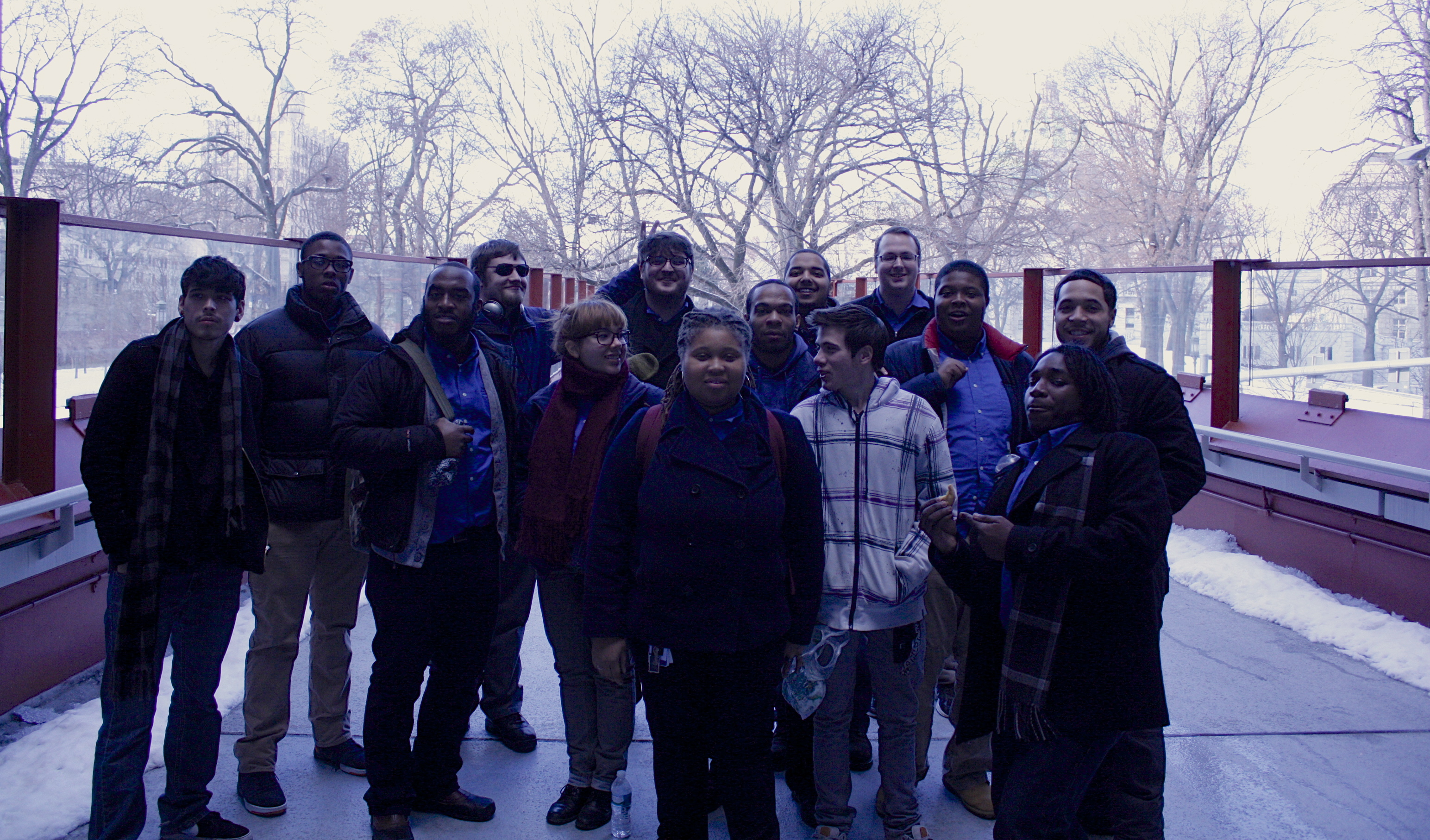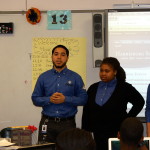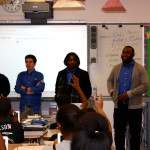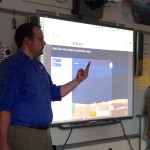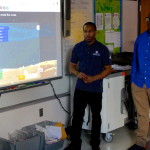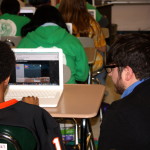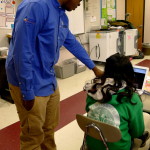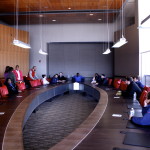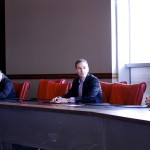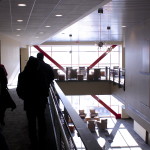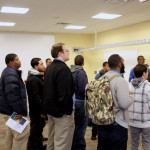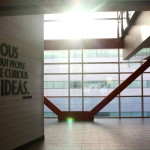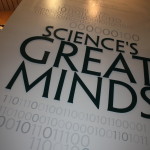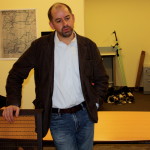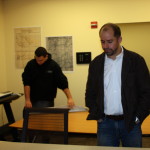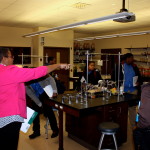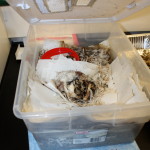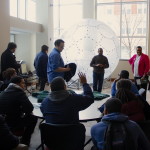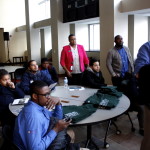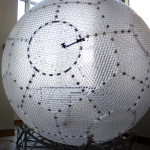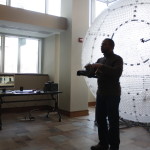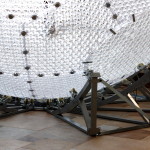Teaching and learning is at the base of what it means to be a part of the Urban Technology Project, and today the Digital Service Fellows had the chance to do both.
Teaching
Awake early, the UTP team drove out to Harrisburg to serve in the Harrisburg school district and perform an Hour of Code at it’s Math Science Academy. The team formed two groups and led a lesson titled, “Lost in Space” in two 8th grade classrooms. They introduced themselves to the students and talked about what coding is, how computers can be used for a multitude of purposes and how computers need to be told what to do. This is the job of programmers, to create commands for computers to execute.
Dylan, Shevar and Kenny explained different examples for what coding can be used for: functions in videogames, cheat codes, building websites, managing data and much more. Gabby discussed the growing field of computer science and the opportunities that are available for young people who choose to learn programming languages. After the introduction, the students jumped into the activity and began coding.
The DSFs circulated throughout the classroom answering questions, giving advice and problem-solving with the students. The activity engaged the 8th graders and pushed some to compete with each other and code faster than their classmates. Some finished the lesson in less than an hour.
We thank the Harrisburg school district for inviting us into their classrooms and giving us the opportunity to start a relationship that we hope to continue based around technology, computer science and service learning.
Learning
After finishing up and saying goodbye to Math Science Academy we headed over to Strawberry Square in downtown Harrisburg and took lunch. Our stomachs full, we were ready to move on and learn about a young, innovative institution. Conveniently located next store, we walked to Harrisburg University and were greeted by Jankail and Jaison from the admissions office. Our tour guide, Jankail showed us upstairs to the executive conference room where we were greeted by Dr. Eric Darr, President of the University, Provost Dr. Bili Mattes, Steven Infanti, head of admissions, and professor Charles Palmer. Dr. Darr gave a brief history of the young institution and its educational and organizational philosophy. Founded in 2001, HU was the first university to be created in Pennsylvania in over 100 years (Carnegie Technical school, now Carnegie Mellon University, was the last). Harrisburg University has grown since its inception and currently enrolls over 400 degree-seeking students and over 400 non-degree students taking classes. Dr. Darr explained that because the university is still a small institution, it is flexible and can make changes more quickly, unlike larger institutions. The focus of HU is the student’s experience.
On our tour we saw a number of projects that HU students are working on, and the resources that are available to them. The campus is vertical, located in one building and offers premier facilities. The classrooms have many technical capabilities including worktables that have laptop connectors, so the professor can project what’s on any laptop screen that is connected to the front of the classroom at any time. Also, cameras are located in most classrooms, so if a student is sick or on a trip and can’t make it, he/she can see a live video stream of the lesson.
We talked to a geospatial technology professor who told us about an ongoing project to scan hundreds of historical maps and locate coal mines throughout Pennsylvania. As he was speaking, two students were sliding a map in between large plastic sheets and guiding it through a scanner – this was a paid student job, $14 an hour – not so bad.
We also stopped in a lab used for environmental science and forensics and in the classroom there were many different living animals, insects in boxes and plastic containers as well as deceased specimens in glass jars. Among the living were: a bearded dragon, flesh-eating beetles (yes, you heard me right, flesh-eating!), spiders, and other creepy crawly critters.
Our second to last stop was with interactive media professor Charlie Palmer. He showed us one of HU’s many cool toys. Imagine a huge hamster ball, constructed with a beehive design, made out of plastic. This was the virtusphere, meant for people to design, test, and experience virtual reality. Ahmeer and Tyree had the chance to put on the virtual reality headset and jump in the giant hamster ball. Inside there was a moveable handrail that helped whoever was inside to walk- The virtusphere rolls in place and allows people to move around the virtual world without actually going anywhere – for game and virtual design it also helps measure X and Z variables, but not Y. Everyone who was watching could see a screen that displayed what the person inside the ball was seeing, and how they were moving around.
Finally, we saw one of the dorms, met some students and the resident life coordinator, and then had to get ready to head back to Philadelphia.
The Digital Service Fellows were pumped from the tour and many have already began to apply to receive more information. Over all, a great day!
—————
The lesson can be found on Tynker’s website. Tynker is an educational online tool to teach computational thinking and introductory code to students of all ages. The lesson can also be found on the Computer Science Education Week’s website.

